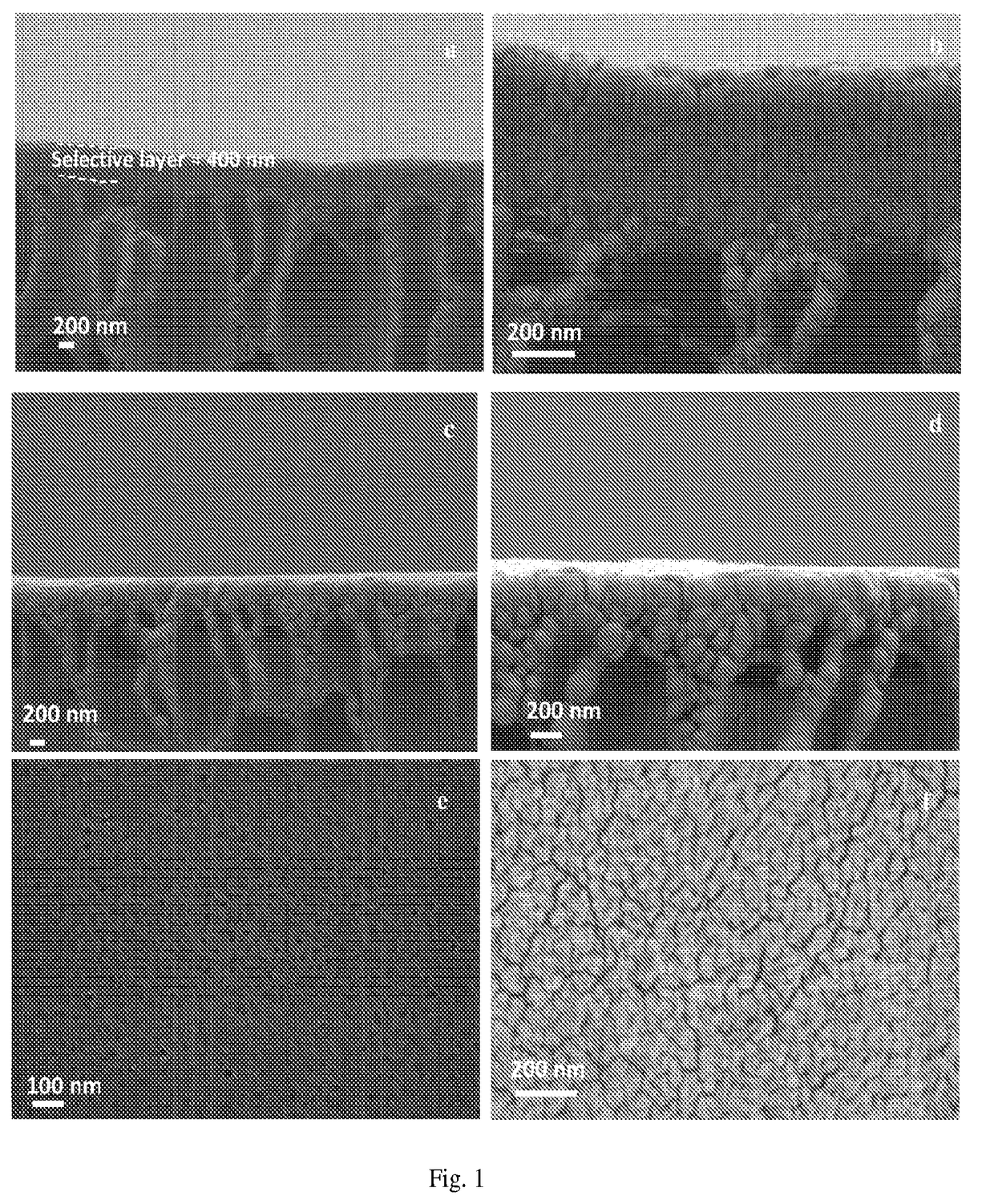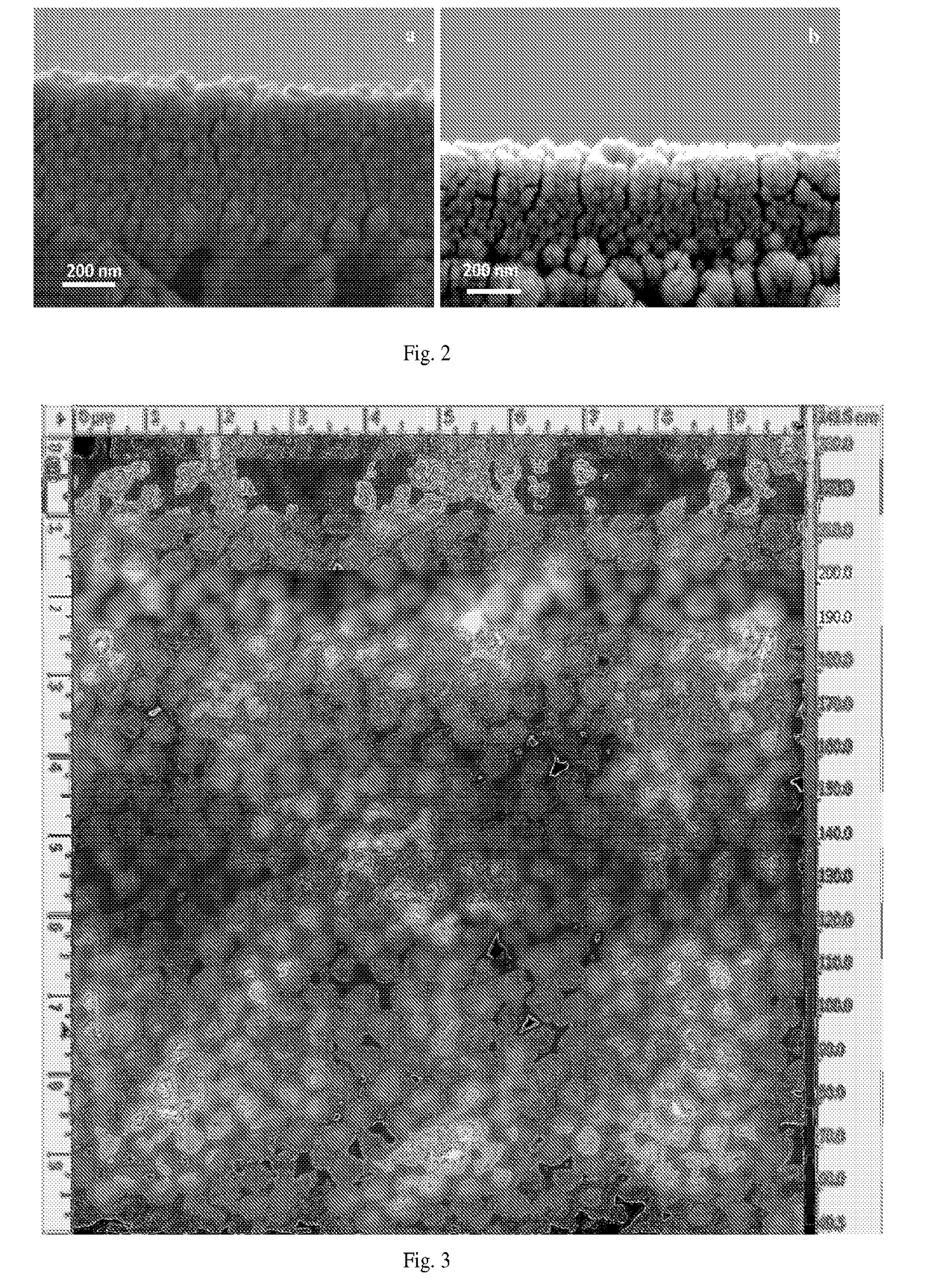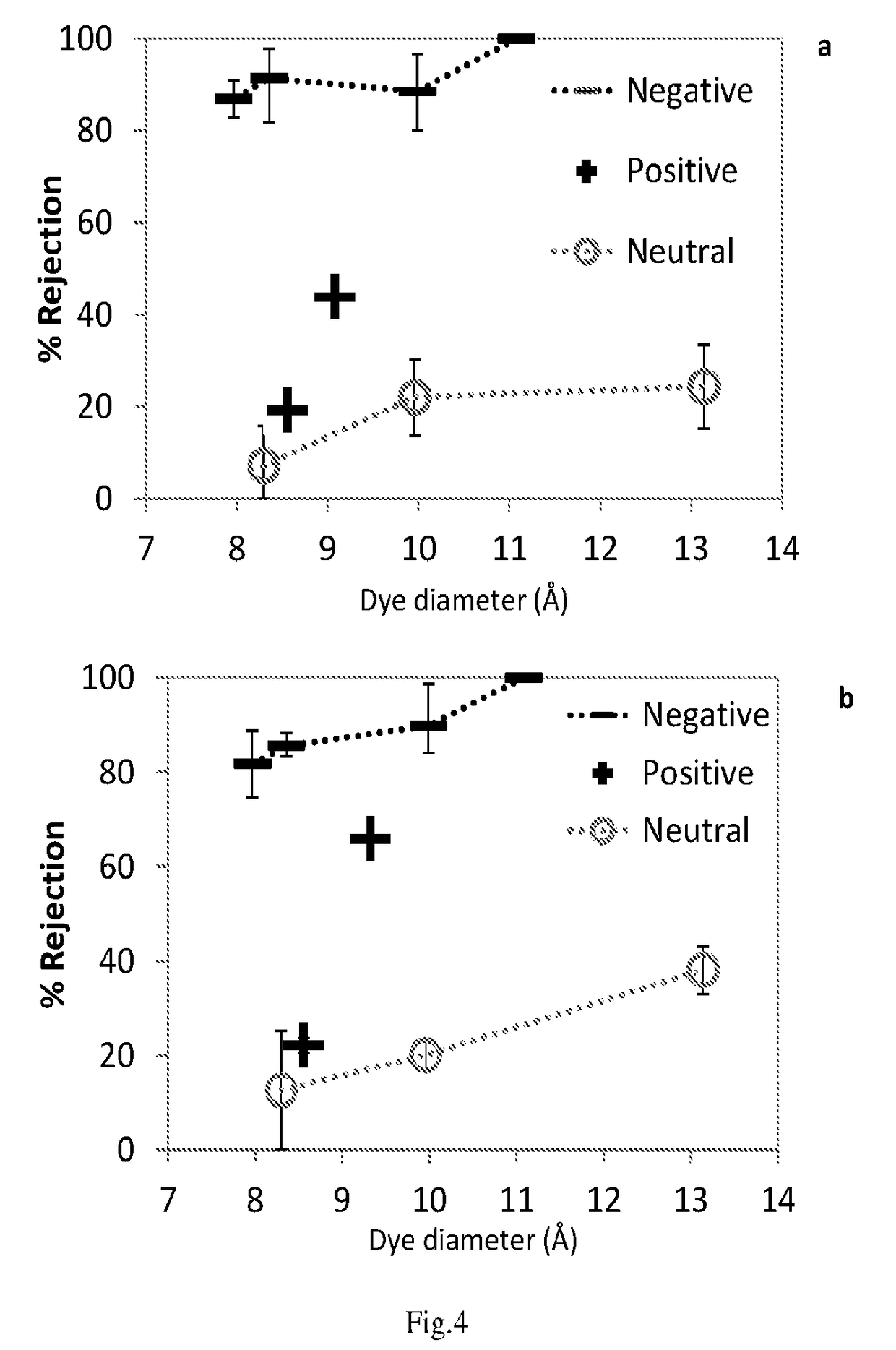Two-layer nanofiltration membranes
- Summary
- Abstract
- Description
- Claims
- Application Information
AI Technical Summary
Benefits of technology
Problems solved by technology
Method used
Image
Examples
example 1
[0038]Synthesis of poly(trifluoroethyl methacrylate-r-methacrylic acid) (“PTFEMA-r-MAA”) copolymers
[0039]Random copolymers formed of two monomers, hydrophobic trifluoroethyl methacrylate (“TFEMA”) and negatively charged methacrylic acid (“MAA”), were synthesized as follows. TFEMA (Scientific Polymer) was passed through a column of basic Alumina (Sigma Aldrich) to remove an inhibitor therein. MAA (Sigma Aldrich) was passed through a neutral alumina column (Sigma Aldrich) to remove an inhibitor therein. For each copolymer, the two monomers totaling 10 g and dimethyl sulfoxide (DMSO, 30 mL) were placed in a round bottom flask having a magnetic stirrer. Monomer ratios were adjusted to provide copolymers having different compositions shown in Table 1 below. Azobisisobutyronitrile (AIBN, 0.005 g, Aldrich) was then added into the flask to initiate the co-polymerization of the two monomers. The flask was sealed with a rubber septum and nitrogen was bubbled through the reaction mixture for 3...
example 2
Characterization of Copolymer Composition, Molar Mass, and Water Uptake
[0040]The copolymers prepared in EXAMPLE 1 were characterized by 1H Nuclear Magnetic Resonance (1H NMR) spectroscopy. After dissolving the copolymers in DMSO-d6, NMR spectra were acquired on a Bruker Avance III 500 spectrometer. The composition of each copolymer was determined by calculating the ratio of the characteristic peaks' integration in 1H NMR spectra from protons in each monomer. Each of the copolymers was determined to contain about 30-55 wt % MAA, as listed in Table 1.
TABLE 1Copolymers of different compositionsCopolymer codeMAA (wt %)CP3030CP4045CP5055
[0041]Molecular weight distribution of the copolymers described in EXAMPLE 1 were measured by a Shimadzu Gel Permeation Chromatography (GPC) System equipped with a TOSOH TSKgel GMHh-M mixed-bed column, guard column, and both UV and refractive index detectors. Tetrahydrofuran was used as the mobile phase eluting at a rate of 0.75 mL / min and calibrated with...
example 3
Preparation of Membrane Casting Solutions Containing Spherical Micelles
[0043]A solution containing 5 wt % of the copolymer obtained in EXAMPLE 1 was prepared by dissolving it in methanol, heating and stirring the resulting solution at 40° C. for 24 hours. The solution thus prepared was then passed through a 1-micrometer glass fiber syringe filter (Whatman) and degassed in a vacuum oven for at least 2 hours.
[0044]It was observed that spherical micelles were formed upon dissolving the copolymer in methanol. The hydrophilic parts of the polymer chain, formed from the segments of MAA repeat units, were located at the interface between the micelles and the solvent, and the hydrophobic parts, formed from the segments of PTFEMA repeat units, were located in the interior of each micelle. The presence of micelles in the solution was confirmed by Dynamic Light Scattering (DLS, Brookhaven instrument).
[0045]A 0.5 wt % of copolymer solution in methanol was used for DLS analysis after filtering t...
PUM
| Property | Measurement | Unit |
|---|---|---|
| Length | aaaaa | aaaaa |
| Fraction | aaaaa | aaaaa |
| Pore size | aaaaa | aaaaa |
Abstract
Description
Claims
Application Information
 Login to View More
Login to View More - R&D
- Intellectual Property
- Life Sciences
- Materials
- Tech Scout
- Unparalleled Data Quality
- Higher Quality Content
- 60% Fewer Hallucinations
Browse by: Latest US Patents, China's latest patents, Technical Efficacy Thesaurus, Application Domain, Technology Topic, Popular Technical Reports.
© 2025 PatSnap. All rights reserved.Legal|Privacy policy|Modern Slavery Act Transparency Statement|Sitemap|About US| Contact US: help@patsnap.com



